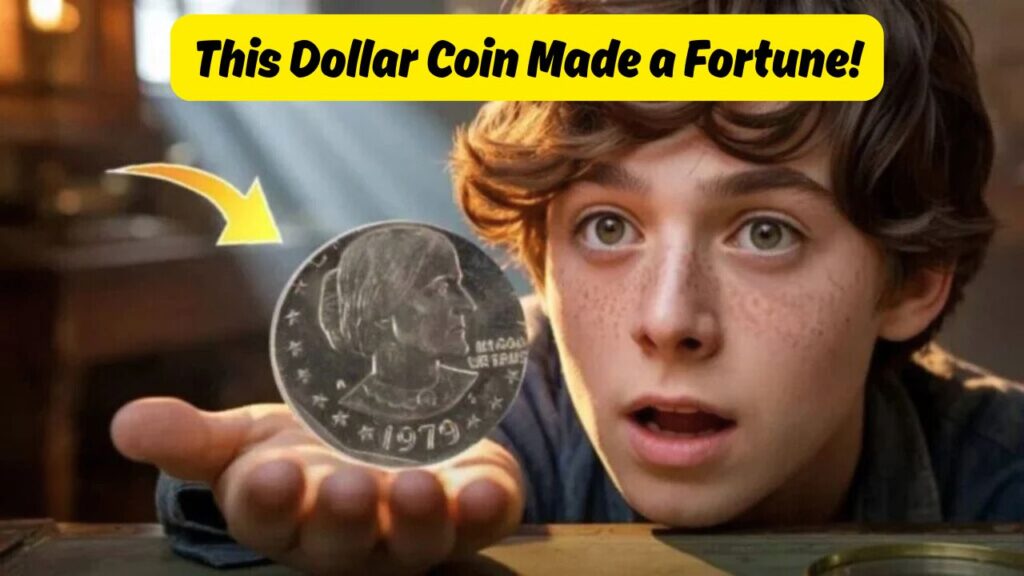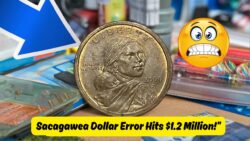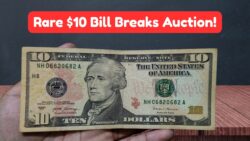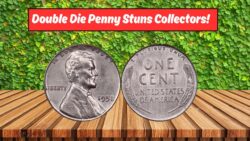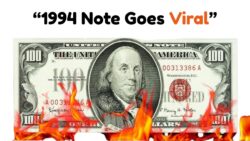Susan B. Anthony Dollar – In the world of coin collecting, sometimes the most unexpected stories bring the biggest payoffs. One such surprising event recently made headlines: a Susan B. Anthony dollar coin, believed to have gone through an entire laundry cycle, sold for a jaw-dropping $39,500 at auction. Yes, a coin that took a tumble with socks and shirts ended up becoming a prized possession for a wealthy collector.
Who Was Susan B. Anthony and Why Is Her Coin So Special?
Susan B. Anthony was a leading figure in the women’s suffrage movement in the United States. In honor of her activism and legacy, the U.S. Mint introduced the Susan B. Anthony dollar in 1979. It was the first U.S. coin to feature a real woman, rather than a fictional or symbolic female figure like Lady Liberty.
Although the coin was minted from 1979 to 1981, and briefly again in 1999, it was not well-received by the public. People often confused it with the quarter due to its size and color. As a result, production ceased and the coin became a relatively obscure piece — until rare variants and quirky stories like this one brought it back to life.
How Did a Laundry Coin Become a $39,500 Treasure?
According to the auction house responsible for the sale, the Susan B. Anthony dollar in question had been discovered in the lint trap of an industrial washing machine at a laundromat in Ohio. The coin had clearly experienced a rough tumble — it was worn around the edges, slightly dulled, and had minor surface abrasions.
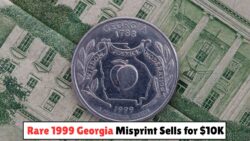 This 1999 Georgia Quarter With Misprint Just Hit $10,000 at Auction – Still in Circulation!
This 1999 Georgia Quarter With Misprint Just Hit $10,000 at Auction – Still in Circulation!
But what made it valuable wasn’t just the condition — it was a rare minting error. Experts quickly recognized it as a “double strike off-center error” — meaning the coin had been struck twice at the mint, with the second imprint slightly off from the first. These types of mint errors are extremely rare, especially for Susan B. Anthony dollars.
Pair that rarity with the bizarre backstory, and collectors were immediately intrigued. Bidding started at $1,000 but quickly escalated, eventually reaching the final hammer price of $39,500.
What Makes Error Coins So Valuable?
Error coins are highly sought after in the numismatic community for a few key reasons:
1. Rarity
- Most mint errors are caught and destroyed before coins reach the public.
- Very few make it into circulation, making them rare and valuable.
2. Uniqueness
- Each error coin is different, often one-of-a-kind.
- This uniqueness attracts collectors willing to pay high prices.
3. Mystique and Stories
- A coin with an odd backstory — like being discovered in a washing machine — adds emotional and collector value.
Types of Mint Errors Seen in Dollar Coins
Here are some known mint error types that increase a coin’s value:
| Error Type | Description | Value Range |
|---|---|---|
| Double Strike | Coin is struck more than once, sometimes off-center | $500 – $50,000 |
| Off-Center | Part of the design is missing due to misalignment | $250 – $5,000 |
| Wrong Planchet | Coin struck on metal meant for a different denomination | $1,000 – $20,000 |
| Die Cap Error | Coin is struck by a die that has another coin stuck to it | $3,000 – $25,000 |
| Broadstrike | Coin struck without a retaining collar, spreads outward | $100 – $1,500 |
What Should You Look for in Susan B. Anthony Coins?
If you happen to have a few Susan B. Anthony dollars lying around — especially from 1979, 1980, 1981, or 1999 — here’s what to inspect:
- Check for Mint Errors: Look for doubling, off-center designs, or unusual edge cuts.
- Inspect Mint Marks: Coins from Philadelphia (no mint mark), Denver (D), and San Francisco (S) may have different values.
- Condition is Key: Uncirculated coins or those in brilliant condition fetch higher prices.
- Rare Variants: Some 1979 coins have a “wide rim” near the date — this variation can be worth several hundred dollars.
Why This Sale Matters to Collectors and the Public
The $39,500 auction sale sent a clear message — even “ugly” or “damaged” coins can hold serious value if the story and minting align. This has led many casual collectors and even non-collectors to start checking:
- Coin jars
- Laundry machines
- Old wallets and piggy banks
- Grandparents’ attic collections
As with many collectibles, the key is in knowing what to look for. Most people walk past these coins without a second glance, but with a trained eye, the next fortune might just be sitting in your pocket change.
This unexpected story of a Susan B. Anthony dollar surviving the rinse and spin cycles of an average washing machine only to emerge as a near-$40,000 gem is the kind of headline that turns ordinary citizens into hopeful treasure hunters. Whether it’s because of the coin’s rare mint error, or the compelling story behind it, it proves that sometimes, the ordinary truly can become extraordinary.
If you’ve got any old coins lying around, maybe it’s time to give them a second look.
FAQs
Q1. What year was the rare Susan B. Anthony dollar from the laundry?
The coin was from 1979, one of the first years of production and had a rare double strike error.
Q2. How do I know if my Susan B. Anthony coin is valuable?
Look for mint errors like doubling, off-center designs, and unusual shapes. Coins in uncirculated condition or with unique stories can also be valuable.
Q3. Are Susan B. Anthony dollars still used today?
They are still legal tender but rarely used in daily transactions. Most are held by collectors or stored in banks.
Q4. What is a double strike coin?
It’s a coin that was struck twice during the minting process, often resulting in a visible design overlap or misalignment.
Q5. Can coins found in odd places really be valuable?
Absolutely. A unique discovery story can enhance a coin’s appeal at auctions, especially if paired with a rare error or feature.

